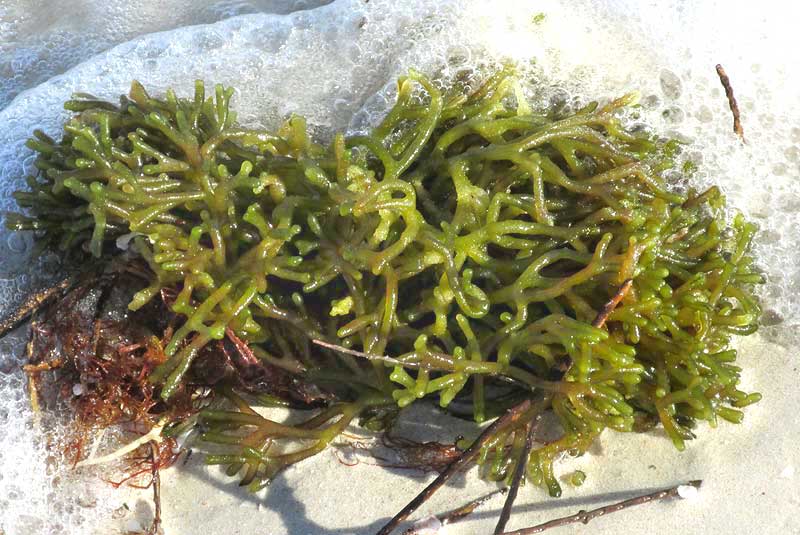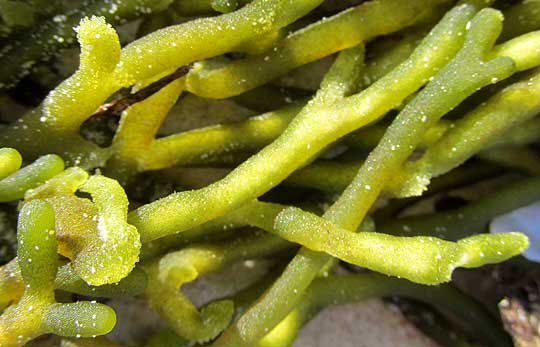Excerpts from Jim Conrad's
Naturalist Newsletter

from the November 30, 2014 Newsletter issued from Río Lagartos, on the Yucatan Peninsula's northern coast (~N21.60°, ~W88.16°), Yucatán state, MÉXICO
DEAD MAN'S FINGERS
On the barrier island across the estuary from Río Lagartos, on the sandy, wave-washed beach facing the Gulf of Mexico and beside the canal connecting the Gulf with the estuary, a hand-sized clump of algae washed ashore looking like a tangle of green, forked spaghetti. That's it above.
A closer look revealed no outstanding features, no distinct nodes or reproductive structures, just occasionally branching, cylindrical stems that felt spongy and rubbery. One rather subtle feature that helped with identification was that where the stems branched, the stem below the branching was slightly flattened. You can see this below:

This is one of a group of species of green algae of the genus Codium, of which about 50 species are recognized, called Dead Man's Fingers. When the tide is out and they hang limply from rocks they're attached to, that's when they look like lifeless, green fingers.
Our particular Dead Man's Fingers is CODIUM FRAGILE. Codium fragile is known by many English names other than Dead Man's Fingers because, originally a native of the Pacific around Japan, it's become invasive throughout much of the world's oceans. It's easily dislodged, and fragmenting into smaller pieces which can form new organisms. Sometimes it overwhelms local algal species and damages oyster beds. Wikipedia has a Codium fragile page.
Green Deane of Eat the Weeds fame writes that "Raw Codium has an earthy flavor, much like oysters, and is full of vitamins and fatty acids." He also says that in Hawaii it's eaten raw, often with tomatoes. It shouldn't be cooked or blanched because it becomes mushy and disintegrates from the heat. In Japan it's preserved in salt.